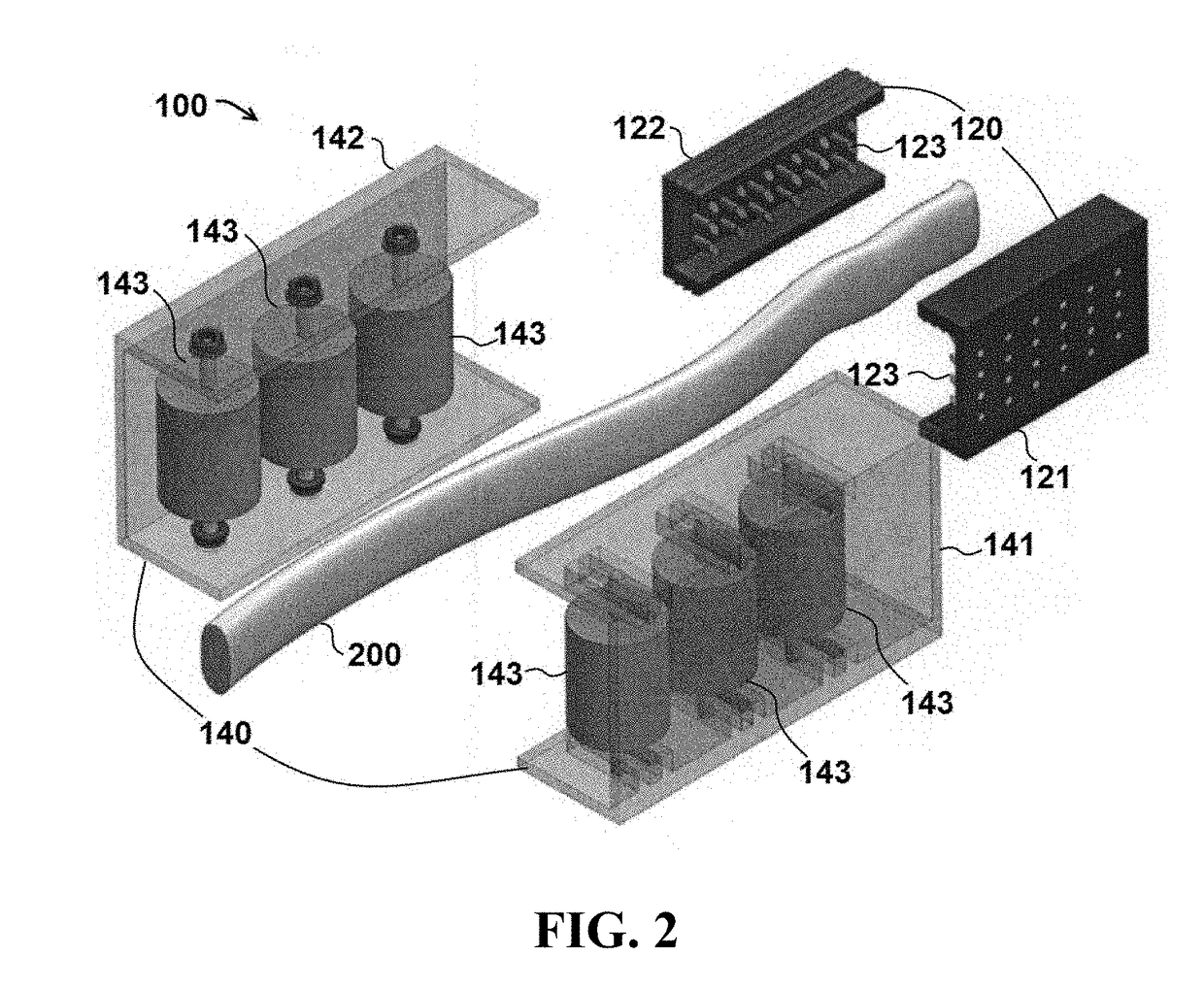Devices and methods for umbilical cord processing
a technology of umbilical cord and device, applied in the field of umbilical cord processing devices, kits and methods, can solve the problems of insufficient support for front teeth and facial development, need of additional surgeries, and potential complications of graft exposure and loss, and achieve the effect of maximizing cell viability
- Summary
- Abstract
- Description
- Claims
- Application Information
AI Technical Summary
Benefits of technology
Problems solved by technology
Method used
Image
Examples
Embodiment Construction
A. GENERAL OVERVIEW OF THE INVENTION
[0071]Referring now to FIG. 1, a perspective view is shown of one embodiment of an apparatus 100 for processing an umbilical cord 200. FIG. 2 provides an exploded view of the embodiment illustrated in FIG. 1. In this embodiment, apparatus 100 comprises a clamping mechanism 120, an extraction mechanism 140, and a receptacle 160. In the illustrated embodiment, clamping mechanism 120 comprises a first housing 121 and a second housing 122 configured to couple together around umbilical cord 200. Housings 121 and 122 further comprise a plurality of protrusions 123 configured to grip umbilical cord 200 when housings 121 and 122 are coupled together around umbilical cord 200.
[0072]In the embodiment shown, extraction mechanism 140 comprises a first end 141, a second end 142, as well as a first housing 147 and a second housing 148 configured to couple together. The illustrated embodiment further comprises a plurality of rollers 143 configured to engage and ...
PUM
 Login to View More
Login to View More Abstract
Description
Claims
Application Information
 Login to View More
Login to View More - R&D
- Intellectual Property
- Life Sciences
- Materials
- Tech Scout
- Unparalleled Data Quality
- Higher Quality Content
- 60% Fewer Hallucinations
Browse by: Latest US Patents, China's latest patents, Technical Efficacy Thesaurus, Application Domain, Technology Topic, Popular Technical Reports.
© 2025 PatSnap. All rights reserved.Legal|Privacy policy|Modern Slavery Act Transparency Statement|Sitemap|About US| Contact US: help@patsnap.com



